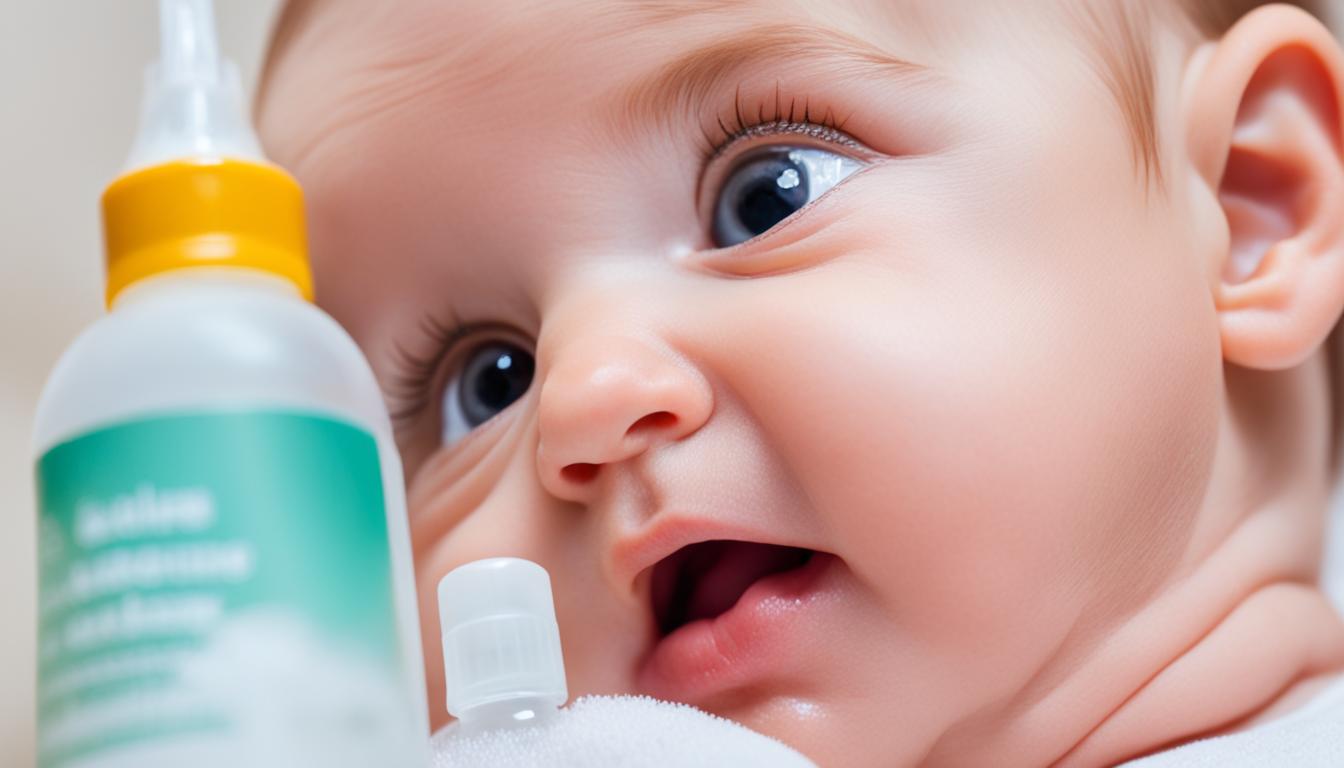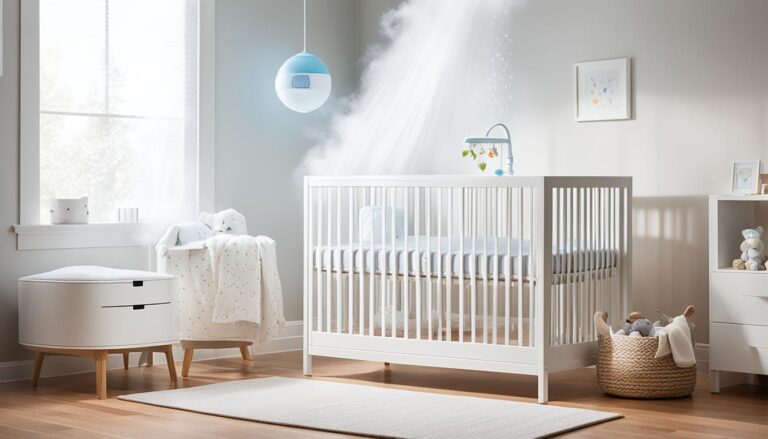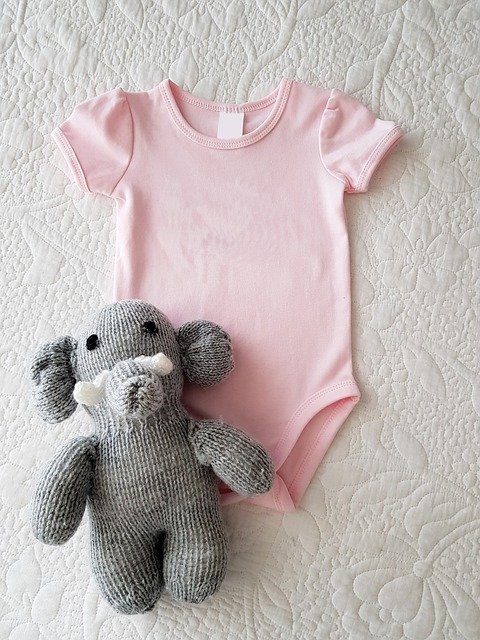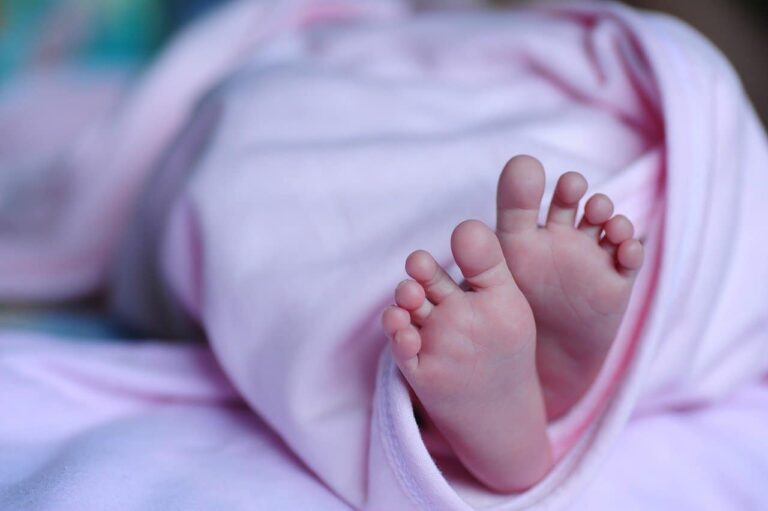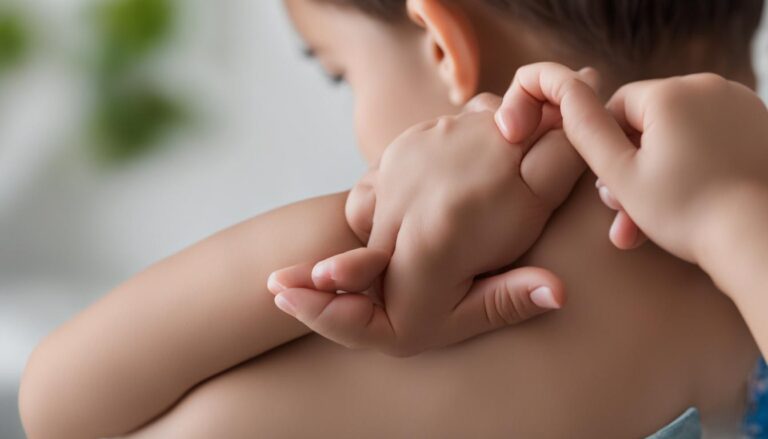Baby Ear Piercing Healing Time Explained
Have you ever wondered how long it takes for a baby’s ear piercing to heal? Is it a quick process or does it take weeks or even months? The healing time of baby ear piercings is a topic of interest for many parents who want their little ones to have pierced ears. Understanding the healing process and taking proper aftercare measures is crucial to ensure a safe and swift healing experience for your baby.
In this article, I will delve into the factors that affect the healing time of baby ear piercings and provide essential tips for aftercare. We will also address common concerns about infections and allergic reactions. So, if you want to know how long it takes for a baby’s ear piercing to heal and how to ensure the best healing outcome, keep reading!
Key Takeaways:
- The healing time for baby ear piercings can vary, but it typically takes around 12 weeks for the piercing to fully heal.
- Proper aftercare is crucial for the healing process of a baby’s ear piercing, and it involves regular cleaning and avoiding activities that may hinder healing.
- Choosing the right jewelry made from hypoallergenic metals such as gold or silver can help minimize the risk of allergic reactions and infections.
- Parents should be vigilant for signs of infection, such as redness, rashes, tenderness, pus, or foul-smelling fluid, and seek medical attention if any of these symptoms occur.
- It is important to keep the initial stud on the baby’s ear for at least 8-12 weeks to ensure proper healing and avoid complications.
When Can You Pierce a Baby’s Ears?
Piercing a baby’s ears is a personal decision for parents. According to experts, babies can have their ears pierced as early as 3 weeks old, although some parents may choose to wait until their baby is a little older. It is important to consider the baby’s development and ability to handle aftercare when deciding on the right time to pierce their ears.
When it comes to the age at which you can pierce a baby’s ears, there are varying opinions. Some parents prefer to wait until their baby is a few months old, while others choose to have the procedure done early on. Ultimately, the decision should be based on what you feel is best for your child.
Before making a decision, it is important to understand the potential risks and benefits of piercing your baby’s ears at a young age. While piercing a baby’s ears is generally considered safe, there is always a small risk of infection or other complications. It is crucial to choose a reputable piercing professional who follows strict hygiene practices and uses sterile equipment.
“Deciding when to pierce a baby’s ears is a personal choice for parents. It is essential to take into consideration the child’s age, development, and readiness for aftercare.”
It is also important to consider your baby’s ability to handle the aftercare process. After having their ears pierced, babies will need proper care and maintenance to ensure the healing process goes smoothly. This includes cleaning the pierced area regularly, avoiding contact with dirty or contaminated objects, and following any specific aftercare instructions provided by the piercer.
Age Guidelines for Piercing a Baby’s Ears:
| Age | Considerations |
|---|---|
| 3 weeks old | Some parents choose to have their baby’s ears pierced at this age. It is important to ensure that the baby is healthy and meets any specific requirements set by the piercer or healthcare professional. |
| 2-3 months old | Many parents opt to wait until their baby is a few months old to have their ears pierced. By this age, the baby’s immune system is stronger and they may be better able to handle the healing process. |
| 6 months and older | Some parents prefer to wait until their baby is older before having their ears pierced. This allows more time for the baby to develop and for the parents to make an informed decision. |
It is important to keep in mind that every baby is different, and what works for one may not work for another. You should always consult with a healthcare professional or a reputable piercing professional before deciding to pierce your baby’s ears.
Choosing the Right Jewelry for Baby Ear Piercing
When it comes to selecting earrings for your baby’s ear piercing, it’s essential to consider jewelry made from hypoallergenic metals. These metals minimize the risk of allergic reactions and infections, ensuring a safe and comfortable experience for your little one. Some popular options for baby earrings include:
- Gold earrings: Gold, particularly 14K or 18K gold, is a classic choice for baby earrings. It is a hypoallergenic metal that is less likely to cause sensitivity or irritation. Whether you prefer yellow gold, rose gold, or white gold, you can find a wide range of designs and styles that are suitable for your baby.
- Silver earrings: Silver is another hypoallergenic option for baby earrings. Sterling silver, which is 92.5% pure, is a popular choice due to its durability and affordability. Just like gold earrings, silver earrings come in various designs, allowing you to find the perfect pair for your little one.
- Medical steel earrings: Medical or surgical steel is a hypoallergenic metal commonly used in body piercings. It offers excellent biocompatibility, making it safe for sensitive skin. Medical steel earrings are highly durable and resistant to tarnish, making them suitable for everyday wear.
Nowadays, you can find a wide variety of baby earrings made from these hypoallergenic metals. Whether you prefer subtle studs or adorable dangle earrings, there are options available to suit your baby’s style and personality. Just remember to choose earrings that are specifically designed for baby ear piercing, with secure backs to prevent accidental removal.
It is important to note that some babies may still experience minor irritation or redness, even with hypoallergenic metals. In such cases, consult with a healthcare professional for further guidance.
How Long Does Baby Ear Piercing Take To Heal?
Healing time plays a crucial role in the ear piercing process. It typically takes around 12 weeks for a baby’s ear piercing to fully heal. However, it is important to note that the healing period can vary from child to child. Factors such as individual healing capabilities and adherence to aftercare instructions can influence the overall healing time.
During the healing process, it is vital to exercise patience and allow the pierced ears ample time to heal before attempting to change or remove the earrings. Prematurely removing the initial earrings can disrupt the healing process and potentially lead to complications.
Remember, healing periods may differ, and it’s always best to consult a healthcare professional if you have any concerns or questions about your baby’s ear piercing healing journey.
To ensure a smooth healing process, it is recommended to closely follow the aftercare instructions provided by the piercing professional. This may include using an after-piercing cleaning solution or a preferred cleaning method, such as isopropyl alcohol or a sea salt solution. Cleaning the piercing twice a day and thoroughly washing hands before touching the area can help prevent infections and promote healing.
Signs of Proper Healing
While every baby’s healing journey may be unique, there are some general signs to look for to gauge the progress of the healing process. These signs include:
- Minimal to no redness around the piercing site
- No swelling or tenderness when gently touching the pierced area
- Gradual fading of any initial bruising
- Lack of discharge or pus
- Minimal to no discomfort during movement or while wearing earrings
It’s important to keep in mind that each baby’s healing process may vary, so closely monitoring the piercing and seeking professional advice if any concerns arise is always recommended.
By understanding the typical healing time and following appropriate aftercare practices, parents can support their baby’s ear piercing healing journey and ensure a safe and successful outcome.
Aftercare for Baby Ear Piercings
Proper aftercare is crucial for the healing process of a baby’s ear piercing. It involves cleaning the pierced area regularly and following specific guidelines to prevent infections and promote healing. Below are some essential aftercare steps for baby ear piercings:
- Clean the piercing: Gently clean the pierced area twice a day using a piercing cleaning solution designed for babies. Alternatively, you can use isopropyl alcohol or a sea salt solution. These solutions help keep the piercing clean and free from bacteria.
- Wash your hands: Before touching the pierced area or cleaning the piercing, make sure to thoroughly wash your hands with soap and water. This helps prevent the introduction of any germs or bacteria that could lead to infection.
- Avoid rotating the jewelry: Unlike with traditional earlobe piercings, it is generally recommended not to rotate the earrings while the baby’s ear is healing. This can disrupt the healing process and potentially cause irritation or injury to the ear.
- Keep the area dry: Avoid exposing the pierced area to excessive moisture, such as from swimming or bathing in pools, hot tubs, or lakes. Moisture can create a favorable environment for bacteria to grow and increase the risk of infection.
- Avoid tight or restrictive clothing: Make sure the baby’s clothing, especially around the neck and ears, is loose and non-restrictive. Tight clothing can rub against the piercing and cause irritation or discomfort.
Note: It is crucial to consult with a healthcare professional or a professional piercer for specific aftercare instructions and recommendations based on your baby’s unique situation.
Benefits of Isopropyl Alcohol and Sea Salt Solution
Both isopropyl alcohol and sea salt solution are commonly used for cleaning piercings and have their own benefits:
| Isopropyl Alcohol | Sea Salt Solution |
|---|---|
| Helps kill bacteria and prevent infection | Natural antiseptic properties that aid in cleansing |
| Dries quickly, reducing moisture in the piercing | Helps soothe any discomfort or swelling |
| Readily available and easy to use | Can be made at home with a saline solution and water |
By following proper aftercare practices and using the appropriate cleaning solution, you can help ensure a healthy and successful healing process for your baby’s ear piercing. If you have any concerns or notice any signs of infection, it is important to seek professional advice from a healthcare provider.
Signs of Infection in Baby Ear Piercings
As a parent, it’s crucial to keep a close eye on your baby’s ear piercing for any signs of infection. Identifying and addressing these symptoms early on is essential for your baby’s well-being and the successful healing of the piercing.
Here are some common signs of infection to watch out for:
- Redness: The area around the piercing may appear red or inflamed.
- Rashes: Unusual rashes or bumps may develop near the pierced area.
- Tenderness: The pierced site might be sensitive or painful to the touch.
- Pus: Discharge of pus, a thick yellow or white fluid, from the piercing is a sign of infection.
- Foul-smelling fluid: If you notice a foul odor coming from the pierced ear, it may indicate an infection.
If you observe any of these symptoms, it’s important not to ignore them. Seeking medical attention is crucial to prevent the infection from worsening. A healthcare professional will be able to provide appropriate guidance and treatment.
Remember, early intervention is key when it comes to infection. By staying vigilant and taking prompt action, you can ensure the health and well-being of your baby.
“Identifying and addressing infection symptoms early on is crucial for your baby’s well-being and the successful healing of the piercing.”
Expert Tips:
To further prevent infection and promote healing, here are some expert tips:
- Keep the pierced area clean by gently washing it twice a day with a mild saline solution.
- Avoid touching the piercing with dirty hands and make sure to thoroughly wash your hands before any contact.
- Avoid rotating or removing the earrings until the piercing has fully healed.
- Protect the pierced area from excessive moisture, such as swimming or submerging in water, until the healing is complete.
When to Consult a Healthcare Professional
If you notice any signs of infection or are concerned about your baby’s piercing, it is best to schedule an appointment with a healthcare professional. They can assess the situation and provide appropriate guidance, ensuring the prompt resolution of any potential issues.
How Long To Keep the Stud on Baby’s Ear
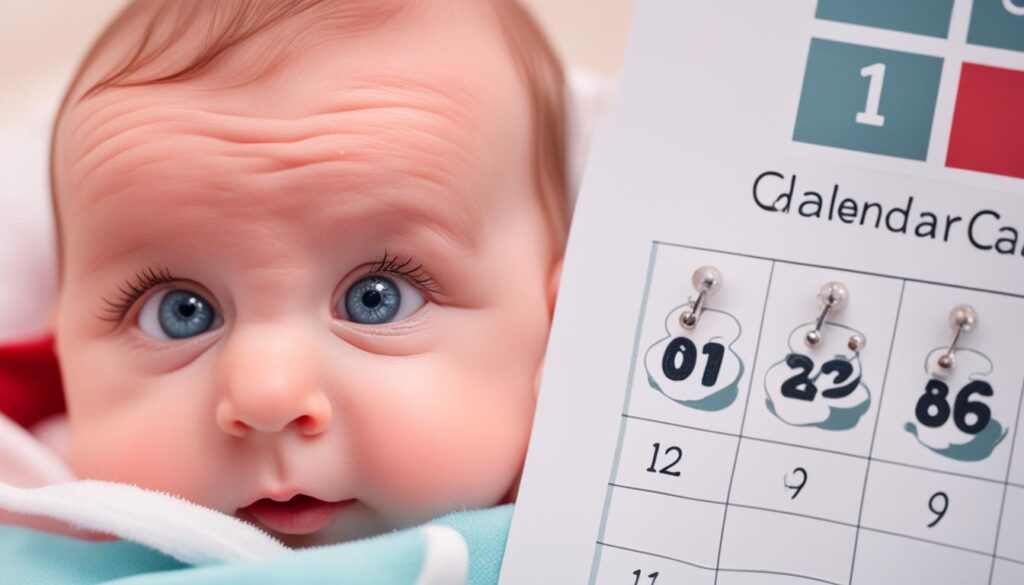
To ensure proper healing, it is essential to keep the initial stud on a baby’s ear for a specific duration. The stud should be kept in place for a minimum of 8-12 weeks. However, in some cases, it can take up to six months for the piercing to fully heal. Removing the stud before the healing process is complete can be detrimental to the piercing’s recovery.
During the healing period, it is crucial to allow the pierced area to settle and adjust to the new jewelry. Removing the stud prematurely may cause the pore to close, leading to complications and a delay in the healing process.
Average Healing Time for Baby Ear Piercing
| Piercing Healing Time | Duration |
|---|---|
| Minimum Healing Time | 8-12 weeks |
| Maximum Healing Time | Up to six months |
It is essential to monitor and care for the piercing during the healing period. Clean the pierced area regularly, following the aftercare instructions provided by a professional piercer or healthcare provider. By maintaining proper hygiene and allowing sufficient time for healing, you can ensure the long-term success of your baby’s ear piercing.
Piercing Guns vs Needle for Baby Ear Piercing
When it comes to piercing a baby’s ears, choosing the right method is of utmost importance. The two main methods commonly used for ear piercing are piercing guns and needles. However, it is crucial to understand the differences between the two and prioritize safety and precision.
Piercing guns are often used in mall kiosks and jewelry stores for quick and convenient ear piercings. However, they should never be used on babies, as infants are unable to sit or lie still for long periods. The forceful nature of piercing guns can lead to excessive trauma and discomfort, increasing the risk of complications. Using piercing guns on babies can also result in inaccurate placement due to their squirmy nature, leading to unsightly and uneven ear piercings.
Needles:
On the other hand, needles offer more precision and safety in the ear piercing process, especially for babies. A professional piercer or a healthcare provider should always perform the procedure using sterile equipment. They possess the expertise to ensure accurate placement and minimize discomfort during the piercing. Needles used for piercings are typically single-use and disposable, reducing the risk of infections or cross-contamination.
Expert tip: When it comes to piercing a baby’s ears, it is essential to prioritize precision and safety. Always opt for the needle method, performed by a professional piercer or a healthcare provider using sterile equipment.
Comparison of Piercing Guns and Needles
| Criteria | Piercing Guns | Needles |
|---|---|---|
| Precision | Inaccurate placement due to limited control | Precise placement under professional supervision |
| Discomfort | Higher chance of excessive trauma or discomfort | Minimized discomfort with experienced professionals |
| Safety | Risk of infections and complications | Reduced risk of infections with sterile equipment and disposable needles |
| Stress on Baby | Longer process, increasing the likelihood of distress | Shorter process, minimizing stress on the baby |
As seen in the comparison table, needles offer greater precision, reduced discomfort, improved safety, and minimized stress for the baby during the ear piercing process. Opting for a professional piercer or a healthcare provider who uses sterile equipment and the needle method ensures the best possible outcome for your baby’s ear piercing.
Cleaning Baby Ear Piercings

When it comes to caring for your baby’s newly pierced ears, proper cleaning is crucial to prevent infections and promote healing. Here are some essential tips for cleaning your baby’s ear piercings:
- Choose the right cleaning method: You can either use a normal after-piercing cleaning solution specifically designed for babies or opt for isopropyl alcohol or a sea salt solution. These options help to keep the pierced area clean and disinfected.
- Clean twice a day: It’s important to clean your baby’s ear piercings at least twice a day to maintain proper hygiene. Gently clean around the earrings using a cotton swab or a clean cloth soaked in the cleaning solution.
- Wash hands before touching: Before cleaning your baby’s ear piercings, make sure to wash your hands thoroughly to prevent introducing any bacteria or dirt to the pierced area.
Remember, consistency is key when it comes to cleaning your baby’s ear piercings. By following these cleaning tips, you can help ensure a safe and healthy healing process for your little one.
Tips for Cleaning Baby’s Ear Piercings:
| Cleaning Method | Description |
|---|---|
| After-piercing cleaning solution | A specially formulated solution designed for cleaning pierced ears in babies. It is gentle and helps prevent infections. |
| Isopropyl alcohol | An antiseptic solution that can be used to clean the pierced area. Make sure to dilute it with water before applying. |
| Sea salt solution | A mixture of warm water and sea salt that acts as a natural disinfectant. It can help soothe and cleanse the pierced area. |
“Proper cleaning is essential for the healing process of your baby’s pierced ears. By using the right cleaning method and following a regular cleaning routine, you can ensure the best possible care for your baby’s ear piercings.” – Dr. Emily Russo, Pediatrician
Bathing and Water Exposure After Ear Piercing
After your baby’s ear piercing, you might be wondering how to navigate bathing and water exposure to ensure proper healing. Here are some important guidelines to follow:
- Wait for 3-5 days before allowing the pierced area to get wet during baths. This initial waiting period allows the piercing site to begin healing.
- Once the waiting period is over, it is generally safe to bathe your baby as usual. Use mild, fragrance-free soap and avoid scrubbing the pierced area forcefully.
- However, it is important to avoid submerging the ears in pools, hot tubs, or other bodies of water until the piercing has fully healed. This prevents bacteria or other contaminants from entering the piercing site.
To give you a better idea, here’s a table summarizing the guidelines for bathing and water exposure after ear piercing:
| Action | Duration/Instructions |
|---|---|
| Wait before getting the pierced area wet | 3-5 days |
| Bathe your baby | Use mild, fragrance-free soap and avoid scrubbing the pierced area forcefully |
| Avoid submerging the ears in pools, hot tubs, or other bodies of water | Until the piercing has fully healed |
By following these guidelines, you can ensure the safety of your baby’s ear piercing and promote proper healing.
Baby Ear Piercing and Cultural Traditions
Baby ear piercing is a practice deeply rooted in cultural traditions and family practices. In many cultures, piercing a baby’s ears at an early age is considered a significant tradition and a way to celebrate the baby’s arrival into the world. These cultural customs have been passed down through generations, symbolizing various meanings and beliefs.
Understanding and respecting these cultural traditions is important when making decisions about your baby’s ear piercing. It allows you to honor your heritage and preserve cultural practices that have endured over time. Whether it is a way to commemorate family connections, showcase cultural identity, or simply a rite of passage, the decision to pierce your baby’s ears is a personal one that reflects your values and traditions.
When considering baby ear piercing, it can be helpful to explore and discuss your family’s cultural practices. Learning about the significance behind these traditions can deepen your understanding and appreciation for the practice. It also provides an opportunity to have open conversations with elders and family members who may have valuable insights and experiences to share.
Ultimately, the decision to pierce your baby’s ears should be made with consideration for your family’s cultural traditions, personal beliefs, and your baby’s well-being. By approaching this decision with respect and understanding, you can create a meaningful and culturally significant experience for your baby.
FAQ
When can you pierce a baby’s ears?
Babies can have their ears pierced as early as 3 weeks old, although some parents may choose to wait until their baby is a little older. It is important to consider the baby’s development and ability to handle aftercare when deciding on the right time to pierce their ears.
What is the recommended jewelry for baby ear piercing?
It is recommended to choose jewelry made from hypoallergenic metals such as gold or silver. Gold options like 14K or 18K gold, as well as white gold, are safe choices. Another option is medical or surgical steel earrings, which are also hypoallergenic and minimize the risk of allergic reactions and infections.
How long does baby ear piercing take to heal?
Baby ear piercings typically take around 12 weeks to fully heal. However, the healing time can vary depending on the individual child and their ability to follow aftercare instructions. It is important to be patient and allow the pierced ears sufficient time to heal before changing or removing the earrings.
What is the aftercare routine for baby ear piercings?
Proper aftercare is crucial for the healing process of a baby’s ear piercing. Parents can use a normal after-piercing cleaning solution for babies or try using isopropyl alcohol or a sea salt solution. The piercing should be cleaned twice a day, and hands should be thoroughly washed before touching the area. Following these aftercare guidelines can help prevent infections and promote healing.
What are the signs of infection in baby ear piercings?
Symptoms of infection include redness, rashes, tenderness to the touch, and the presence of pus or foul-smelling fluid. If any of these signs are observed, it is essential to seek medical attention and follow the advice of a healthcare professional.
How long should the stud be kept on a baby’s ear?
To ensure proper healing, a baby’s ear piercing should be kept with the initial stud for at least 8-12 weeks. In some cases, it may take up to six months for the piercing to fully heal. It is important not to remove the stud before the piercing has completely healed, as this may cause the pore to close and delay the healing process.
What is the recommended method for piercing a baby’s ears?
Piercing guns should never be used on babies, as they are unable to sit or lie still for long periods. Needles offer more precision and are safer when it comes to piercing a baby’s ears. A professional piercer or a healthcare provider should always perform the procedure using sterile equipment.
How should baby ear piercings be cleaned?
cleaning a baby’s ear piercings is essential to prevent infections. Parents can use a normal after-piercing cleaning solution meant for babies or opt for isopropyl alcohol or a sea salt solution. Cleaning should be done twice a day, and hands should be thoroughly washed before touching the pierced area.
When can a baby’s ear piercing be exposed to water?
It is generally safe to bathe the baby and wet the pierced area 3-5 days after the ear piercing. However, it is important to avoid submerging the ears in pools, hot tubs, or other bodies of water until the piercing has fully healed. This can help reduce the risk of infection and promote proper healing.
How does baby ear piercing relate to cultural traditions?
Baby ear piercing is often influenced by cultural traditions and family practices. Many cultures have long-standing traditions of piercing a baby’s ears at an early age. It is important for parents to understand and respect their cultural practices when making decisions about their baby’s ear piercing.

